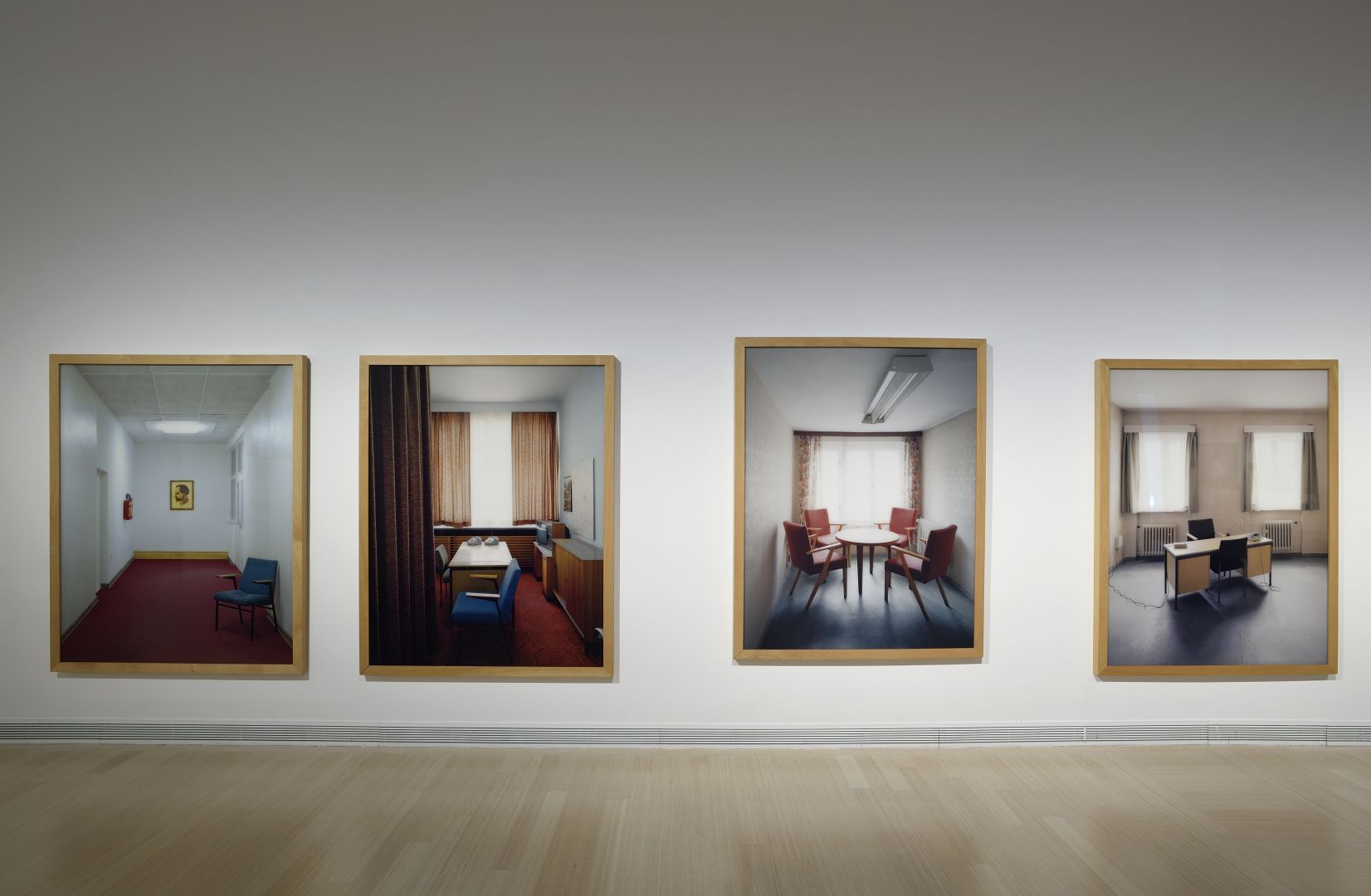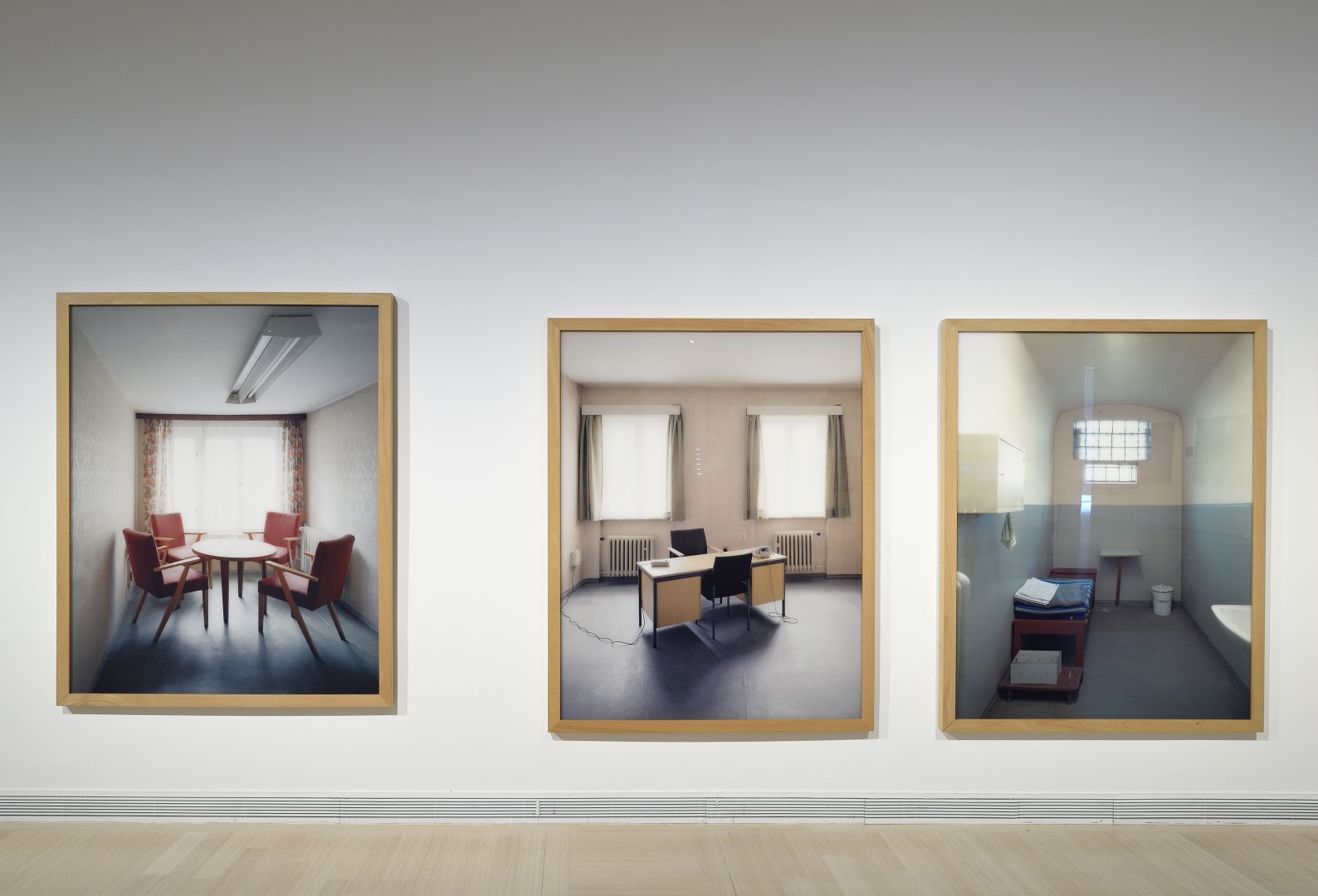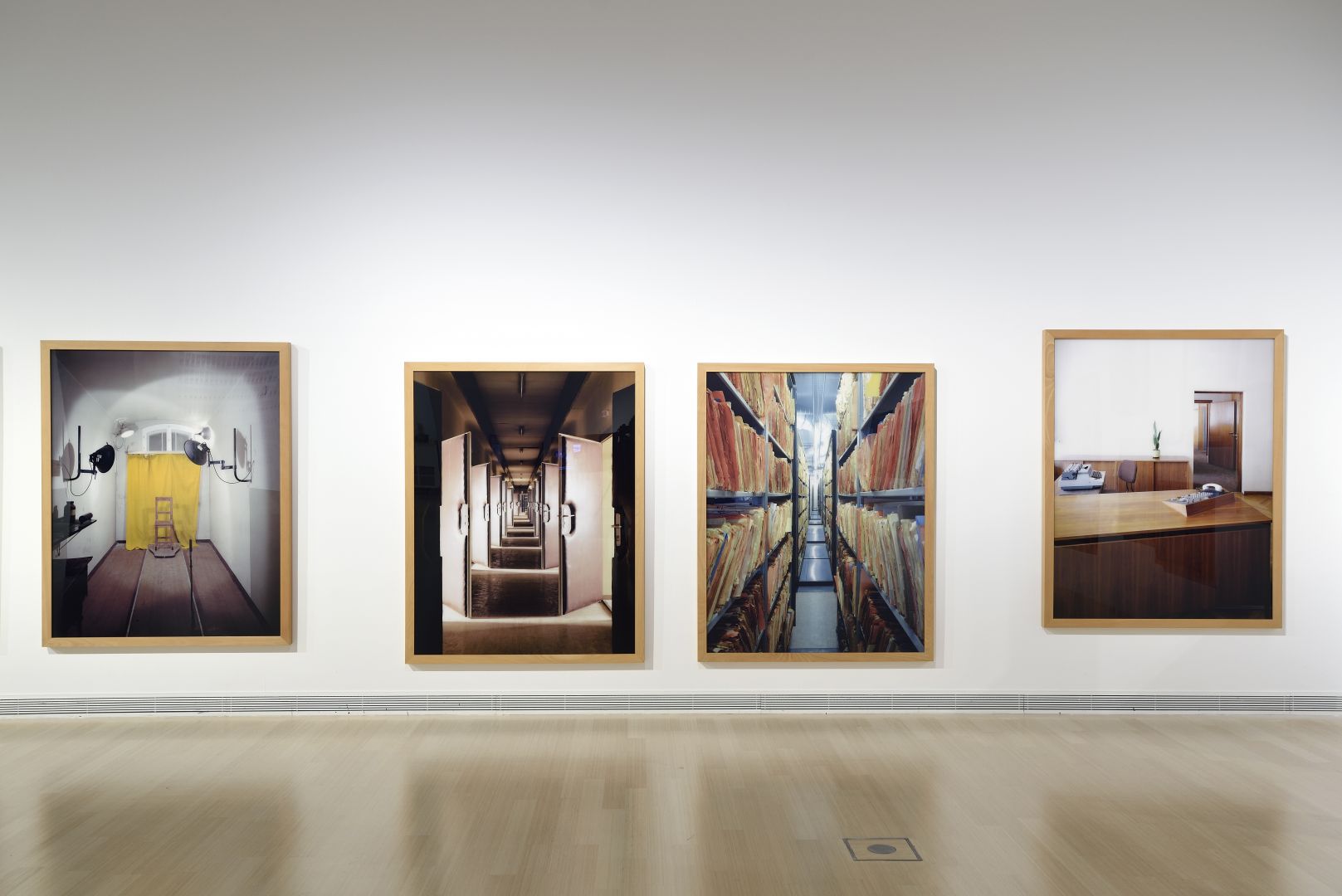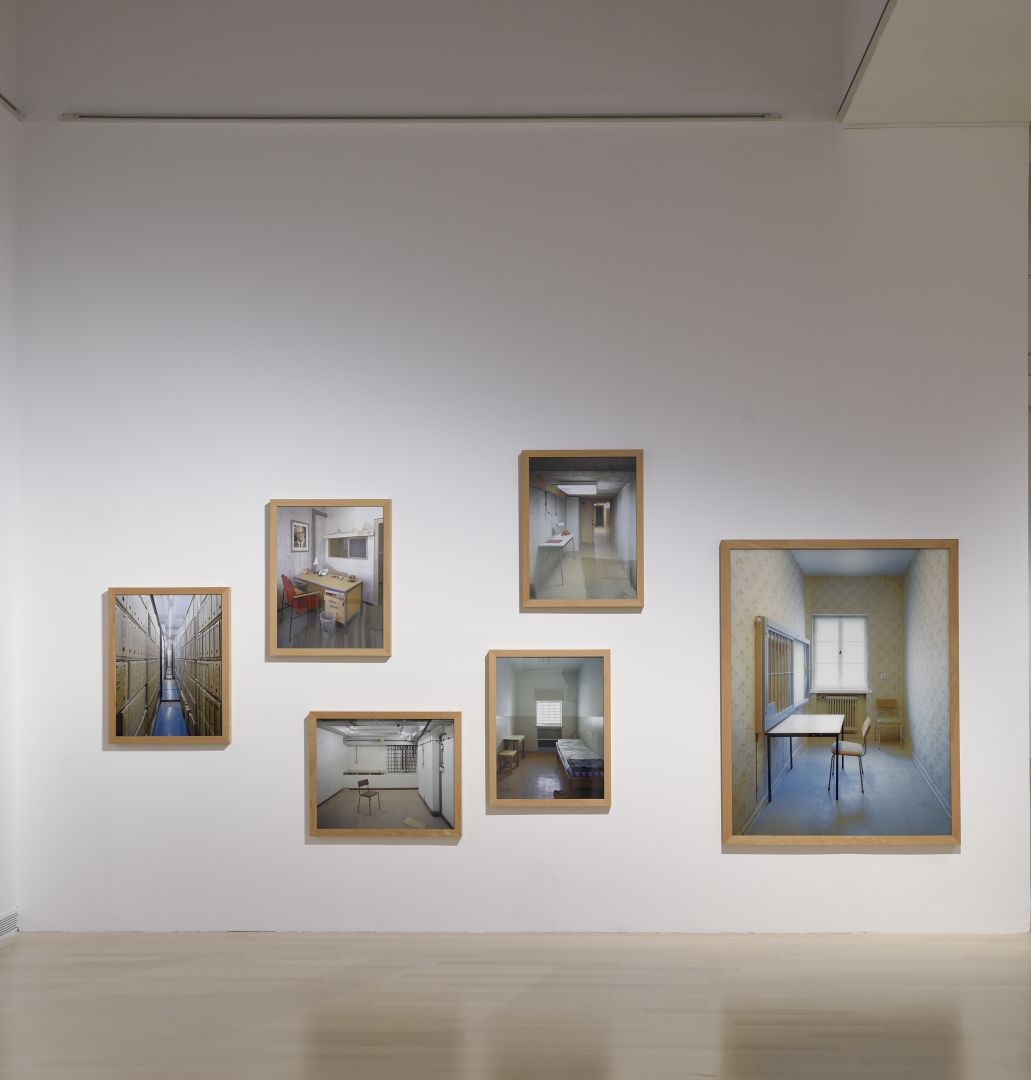Daniel & Geo FUCHS
STASI – secret rooms
Daniel & Geo FUCHS
STASI – secret rooms, 2004–2006
10 large pictures: C-Print, acrylic, alu-dibond, beech tree frame; 170 x 135 cm
5 small pictures: C-print, alu-dibond, beech tree frame with glass; 88 x 70,5 cm
Courtesy Daniel & Geo FUCHS © Daniel & Geo FUCHS
Photo: József ROSTA © Ludwig Museum – Museum of Contemporary Art
In the early 2000s, Daniel & Geo Fuchs embarked on a series intended to explore and reveal the surviving sites of the former GDR’s notorious Ministry of State Security (Stasi). Some of the buildings have been given new function, while others are either memorials or remain completely closed and untouched, preserving their past condition. Since these places were closed to the public not only during the socialist era but remain so today, revealing and processing the past can only be partial in the case of the Stasi, since only imagination, rather than concrete facts, can provide the community with pointers. When Daniel & Geo Fuchs show us the actual spaces, we can almost grasp all the atrocities committed by these authorities directly against the detainees and indirectly against the entire society of the time. We have verbal accounts of the tortures and the conditions of detention, but these are augmented and made even more striking by the visual content of the photographs. Daniel & Geo Fuchs endow their photographs with a formal aesthetic quality that allows for the performative engagement of the spectator. In the case of the large format images, the spectators can have the feeling of being present in the very space, walking through the deserted spaces, or even being the prisoners themselves, captured and awaiting interrogation or imprisonment. Although the photos are not staged, the photographers chose a standardised point of view. A formal solution that was intended to create the most objective way possible of presenting the spectacle conveyed by their images. The uniform, impersonal lighting of the spaces also contributes to the evocation of the photography of the so-called Neue Sachlichkeit (New Objectivity).
TIMÁR Katalin



